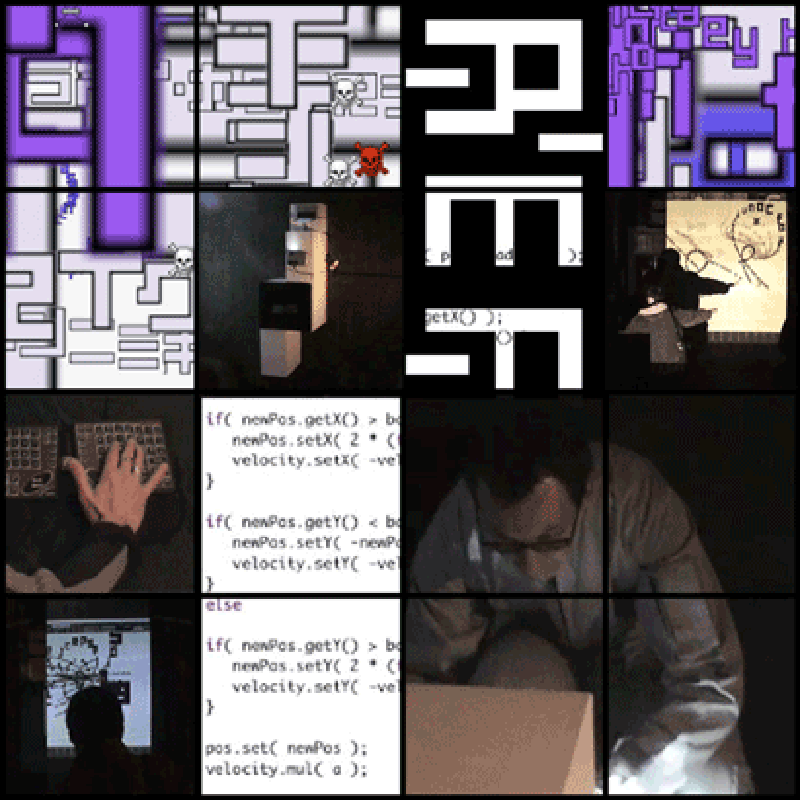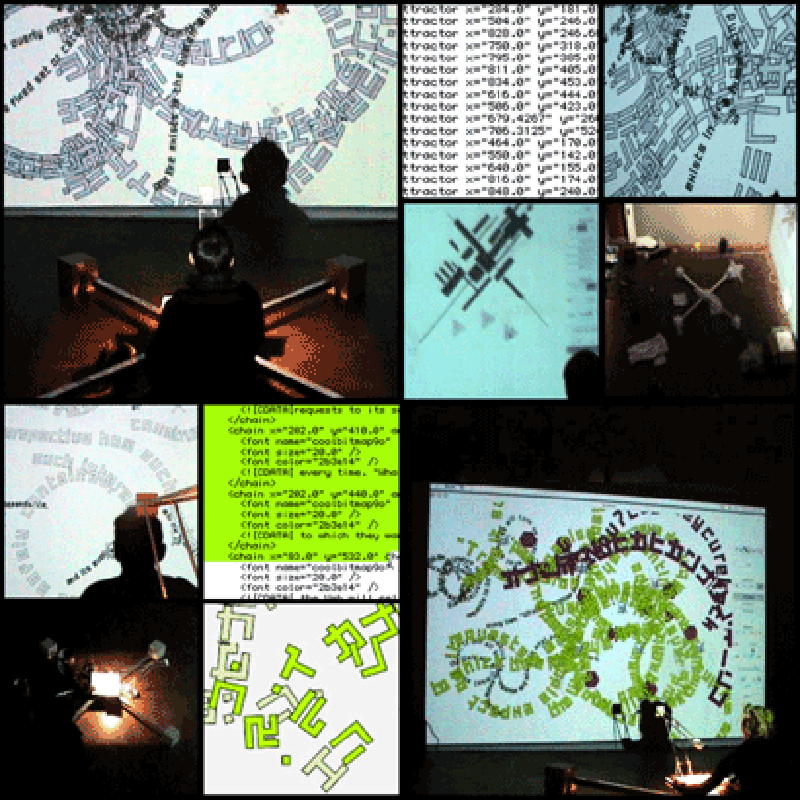|
Main
FleXtexT is an original software (part of the art
installation), which serves to create a flexible, dynamic and
distributive textural space, by using attractors and a new kind
of links based on the partially ordered sets.

Tools
FLEXTEXT consist of tools to access, edit, annotate, share,
communicate and perform flextextstreams.
FLEXTEXT support the collaborative text processes, by:
0. providing sofware that totally destroy knows forms of text
order
1. providing software which enables permanent movement of texts
[by using flexors]
2. providing software which enables the cooperative knowledge
exchange [by developing a new kind of hiperlinks which create a
consistent model for multiple types of inference, including
deduction, abduction, induction and revision]
3. providing free tools to create new hyperchannels for online
communities
2.1 Structure of document in FXT
(E, A, L)
Erector set: any sequence of elements
Attractor set: the elements which group and transform erectors
The actions of this attractors operates in two directions:
1. it disrups and destroy the rigit horizontal, cartezian format
of text created in all the text editors
and net browsers.
2. It make order from this chaos by creating new and unexpected
sequence of characters.
Links set: see 2.2
Document in FXT is a set of erectors with ordered set of
attractors.

2.2 Hyperlinks in FXT
In the program one can create hyperlinks with other documents
made by FXT and with other documents in
the web. Note that fxt kind of linking isn't a typical HTML
linking, but a special, 2-way hyperlinking.
There are two types of hyperlinks:
1. hyperlinks over erectors (2-way hyperlinking attached to any
erector)
2. hyperlinks over attractors (special 2-way hyperlinking
attached to any attractor).
The central concept in hyperlink is the concept of ordered set,
which is a set equipped with a special
type of binary relation. Recall that abstractly a binary
relation on a set P is just a subset
R ? PxP ={(p,q): p,q ? P}. (p,q) ? R simply means that "p is
related to q under R". Binary relation
R thus contains all the pairs of points that are related to each
other under R.
The relations of most interested to us are the order relations.
An ordered set (or partially ordered set or poset) is an ordered
pair (P,<=) of set P and binary
relation <= contained in PxP, called the order on P,
such that <= is reflexive, transitive, and antisymetric.
SPACE
Byzantine
and Christian Museum - Athens
RED
GATE Gallery - Beijing
Video
http://www.youtube.com/watch?v=lw0y1yznwxs
Authors
development: Robert B. Lisek
coding: Robert B. Lisek, Szczepan Kuzniarz
|
|


